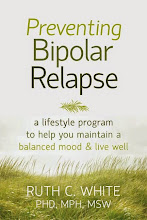As fall approaches many people living with bipolar disorder find that the changes in light/dark influence their mood. So I reviewed the literature for a sample of studies on the topic. Not much has been written lately on the topic but there seems to be inconclusive evidence about the influence of seasons and climate on the moods of people living with bipolar disorder. For a small sample of the research in this area, see below:
Using observations were provided by patients from different geographic locations in North and South America, Europe and Australia a recent study conducted by numerous researchers around the world found no relationship between moods in people living with bipolar disorder and seasons, latitude or climate.
Bauer et al (2009). Relationship among latitude, climate, season and self-reported mood in bipolar disorder. Journal of Affective Disorders, Vol 116(1-2), pp. 152-157.
In a large study of lithium serum levels measured between January 1995 and July 2004 in 3 large teaching hospitals in the Netherlands, there was a significant difference found in average lithium serum levels across seasons, with summer being the highest and winter being the lowest. However, these differences were too small to impact the therapeutic impact of lithium. Temperature variations followed the same pattern.
Wilting et al. (2007). The impact of environmental temperature on lithium serum levels. Bipolar Disorders, Vol 9(6), pp. 603-608.
As part of the ongoing STEP-BD (Systematic Treatment Enhancement Program for Bipolar Disorder), there was a study of seasonal and regional effects on people living with Bipolar Disorder I and II. Results showed that study participants who lived in northern areas were more likely to be depressed. Bipolar II patients were more ill year-round than were patients with Bipolar I and had greater monthly fluctuations in illness rates that patients with Bipolar I.
Friedman et al. (2006). Seasonal changes in clinical status in bipolar disorder: A prospective study in 1000 STEP-BD patients. Acta Psychiatrica Scandinavica, Vol 113(6), pp. 510-517.
Subscribe to:
Post Comments (Atom)





People present the reccommended divisibility rule for that Divisor the industry prime multitude and sprinkle to special cases. The explanation is lucid and straightforward follow, know and fill out an application. www.scorespro.com
ReplyDelete